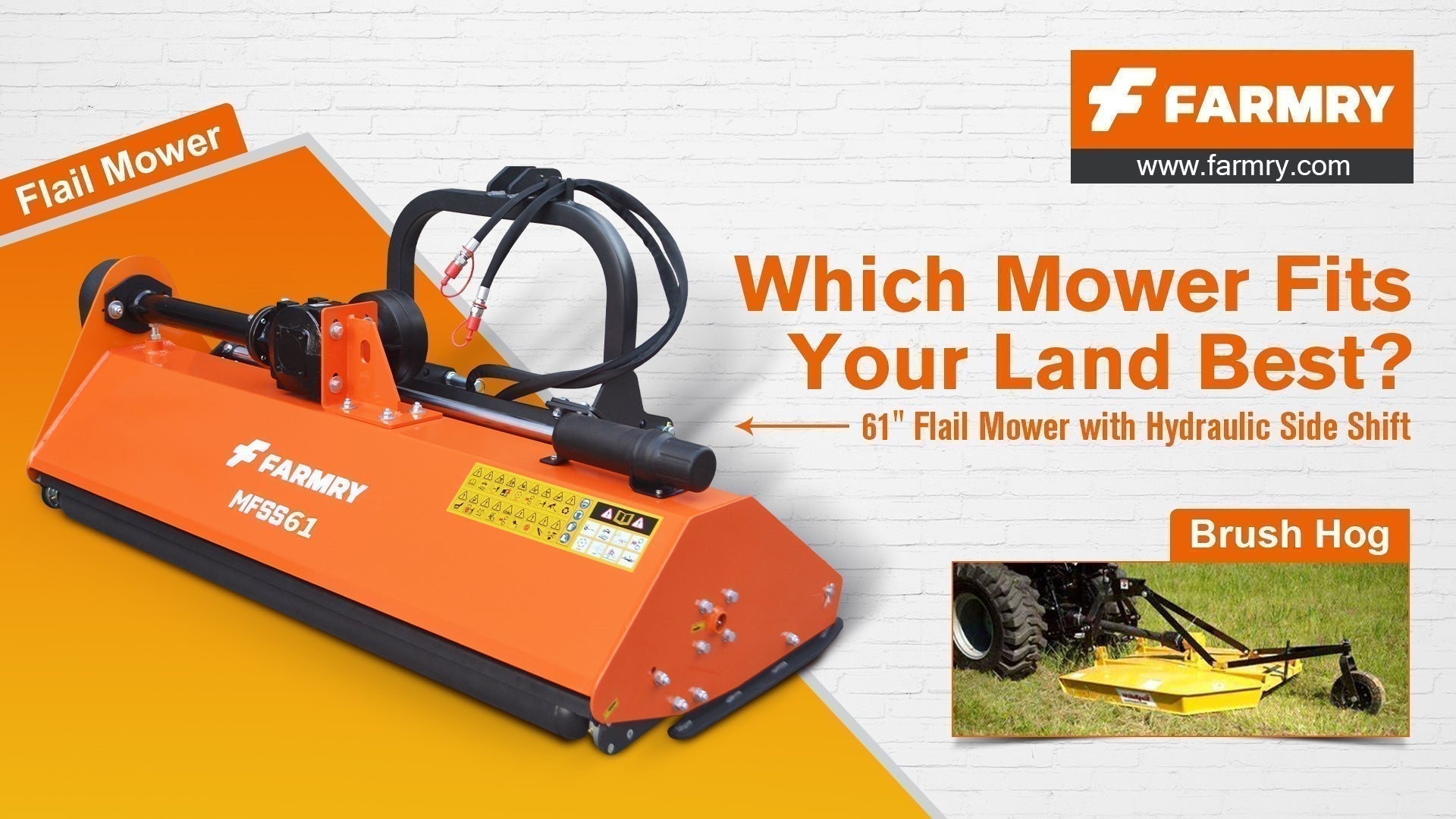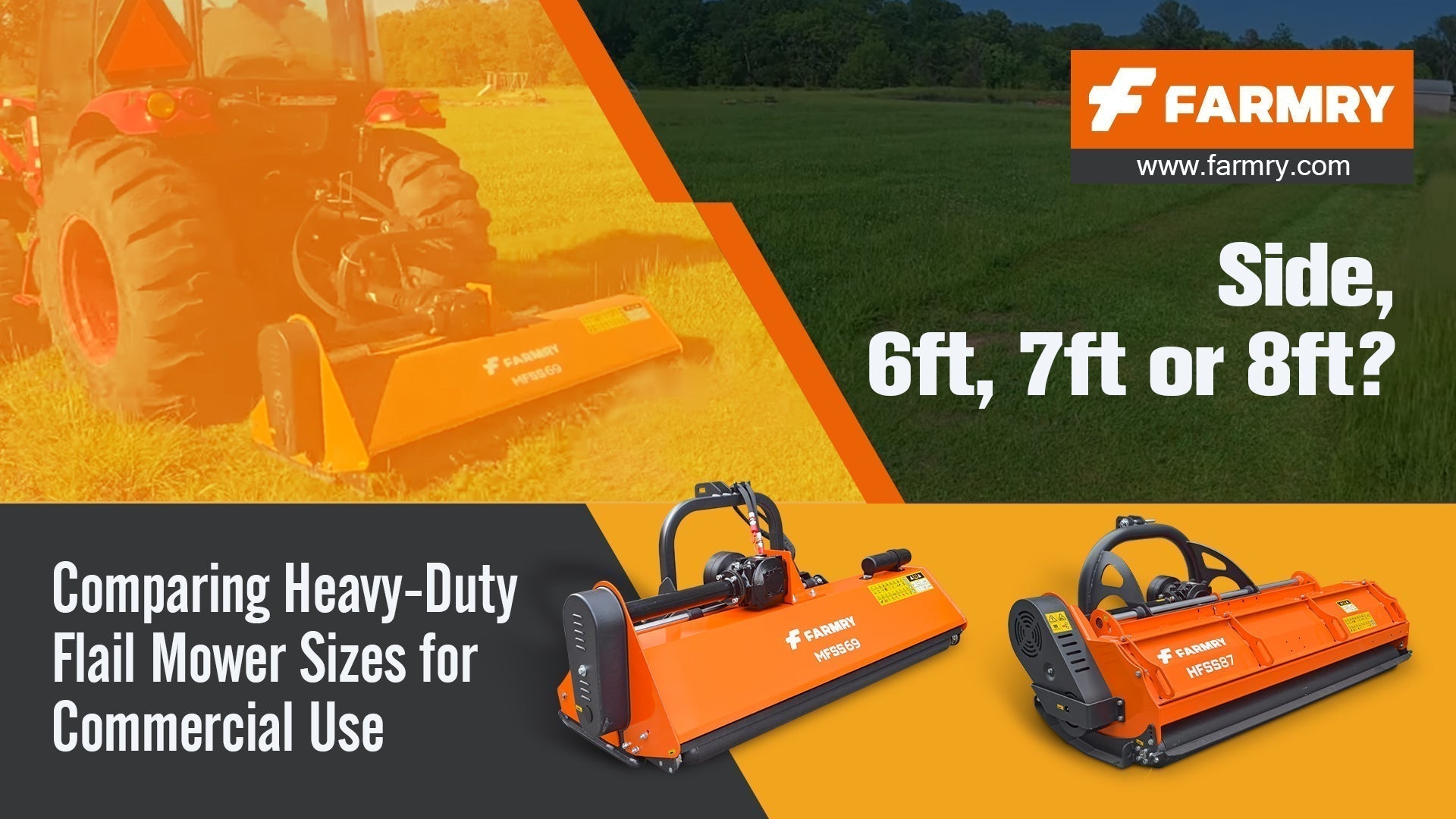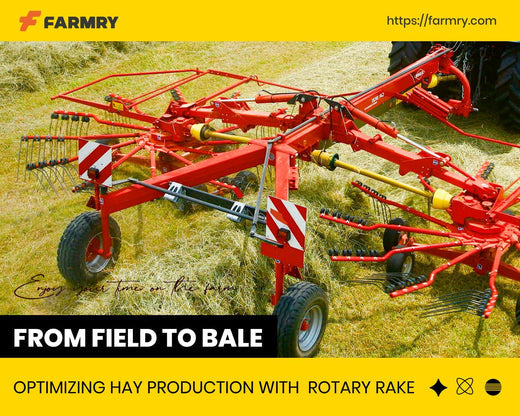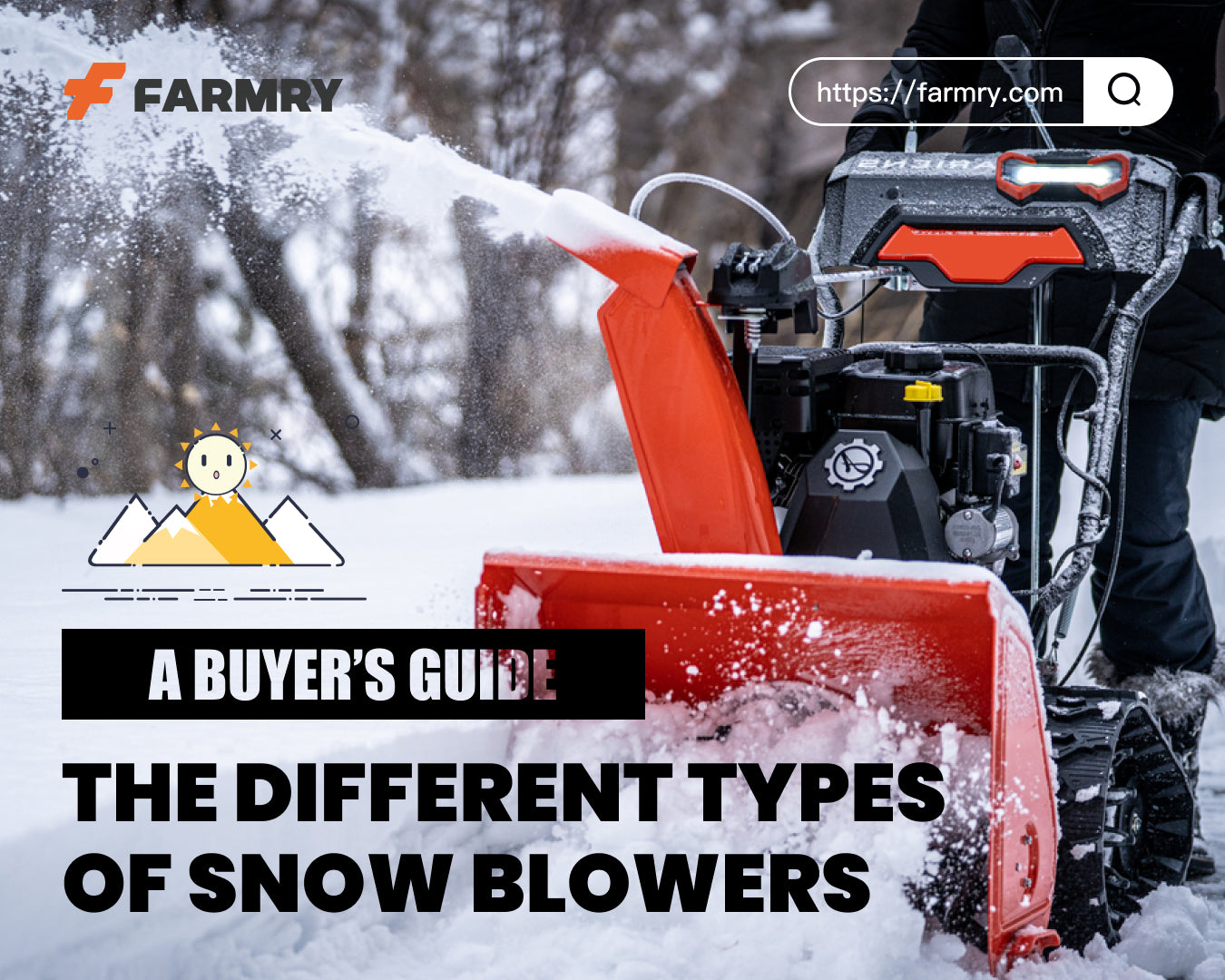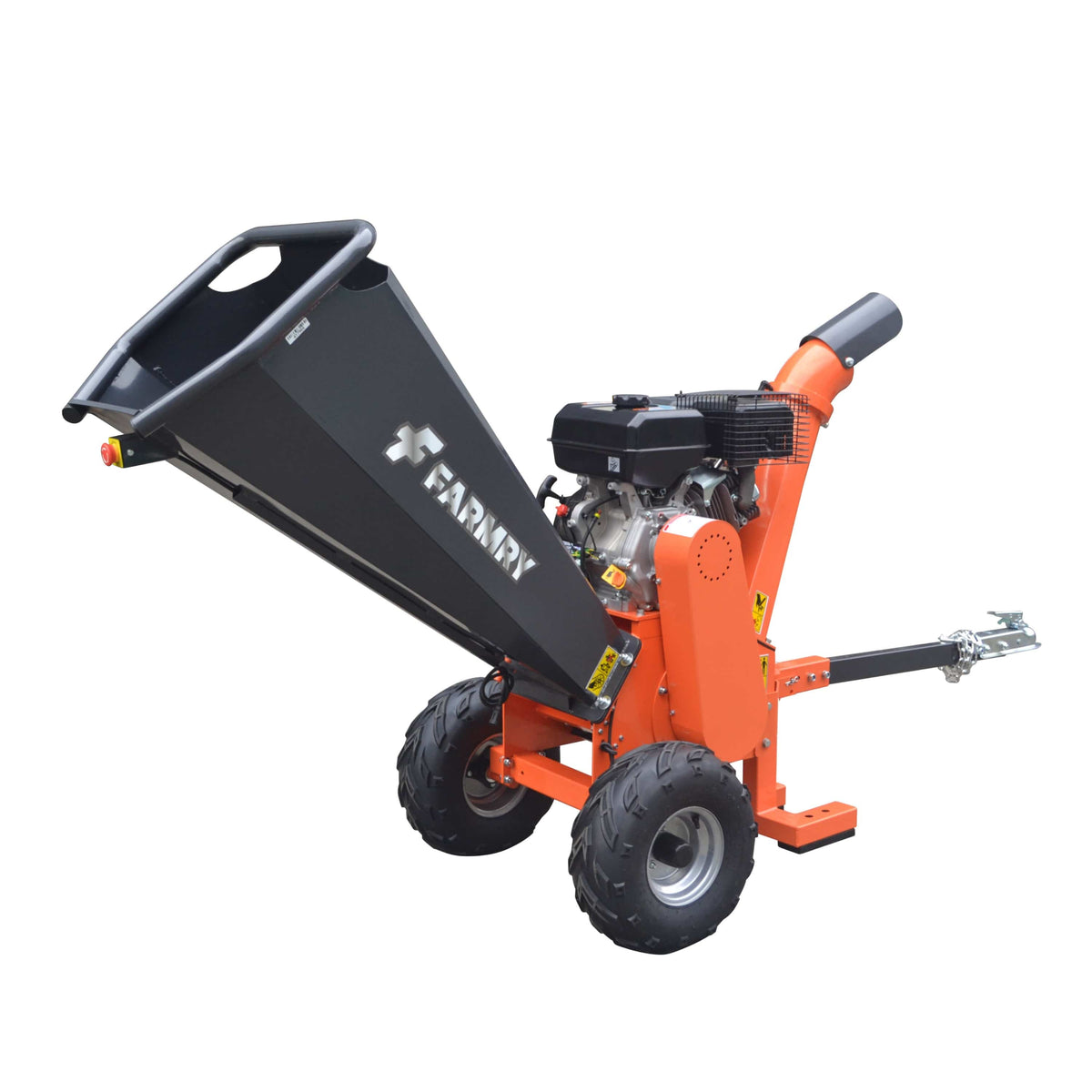Choosing the Right Flail Mower Size: From 48″ to 72″ – What Fits Your Tractor Best?
Flail Mower vs Brush Hog: Which Mower Fits Your Land Best?
When you’re shopping for land-clearing equipment, two machines often come up: the flail mower and the brush hog (also known as a rotary cutter or bush hog). Both are designed to handle terrain and vegetation that’s far too dense for a standard lawn mower, but they each have distinct strengths depending on how and where you mow.
If you're new to tractors and PTO-powered attachments, this guide will walk you through the differences in clear, non-technical language — helping you make the best decision for your acreage.
What Is a Brush Hog?
A brush hog, or rotary cutter, is a rough-cut mower that uses large, swinging blades to chop down tall grass, overgrowth, and even small saplings. It’s a favorite tool among farmers and landowners looking to clear large areas quickly.
Pros:
-
Covers large fields fast — great for one-pass mowing
-
Simple construction means fewer things to maintain
-
Works best on flat fields and open brush zones
Cons:
-
Leaves a rougher cut, not suitable for yards or parks
-
Can throw debris when hitting rocks or branches
-
Less safe around structures, livestock, or fences
If you’re clearing acreage with a John Deere or any tractor with more HP, a brush hog (or rotary mower) is perfect for large-scale clearing jobs. Some models can even be used with skid steers using the right adapter.
What Is a Flail Mower?
A flail mower uses multiple small blades — often called Y blades or hammers — mounted on a horizontal drum. As the drum spins, the blades "flail" outward, shredding brush, stringy stuff like vines, and grass into a fine mulch.
Pros:
-
Produces a nicer finish than most rough cutters — close to a finish mower look
-
Much safer on rocky or uneven terrain
-
Excellent for slopes, fence lines, ditch banks, and tight corners
Cons:
-
Slower mowing speed compared to rotary cutters
-
Slightly more complex with more moving parts to inspect
While brands like Maschio flail mower are well-known in Europe, Farmry offers comparable build quality and heavy-duty designs at a better value for American landowners.
Flail Mower vs Brush Hog: Key Differences
| Feature | Flail Mower | Brush Hog (Rotary Cutter) |
|---|---|---|
| Cut Quality | Clean cut – like a finish mower | Rough cut – good for trails & saplings |
| Debris Control | Safer – flails throw debris downward | Risk of flying objects if hitting rocks |
| Terrain Handling | Great for wet areas, ditches, slopes | Best for flat, open ground |
| Blade Type | Individual Y blades or hammer blades | 2–4 large swinging blades |
| Maintenance | More blades, but easy one-by-one replacement | Fewer parts, simpler structure |
| Speed | Slower but more controlled operation | Fast for large-scale mowing |
| Tractor HP | Suitable for lower to mid-range HP | Often needs more HP |
| Mounting | Usually quick hitch compatible | Standard 3-point or drawbar hitch |
Which One’s Right for You?
✅ Choose a Flail Mower If:
-
You want a cleaner cut and nicer finish
-
You work near fence lines, buildings, or on uneven terrain
-
You're mowing areas with stringy stuff, vines, or debris
-
Your tractor has a PTO shaft and 20–50 HP
👉 Farmry’s flail mower collection includes heavy-duty models with adjustable cutting height, replaceable blades, and quick hitch compatibility.
✅ Choose a Brush Hog If:
-
You need to mow large fields in fewer passes
-
You don’t mind a rougher, uneven finish
-
You're dealing with dense brush or small trees
-
You own a skid steer or tractor with high horsepower
Note: Most rotary mowers include a slip clutch or shear bolt to protect the gearbox when encountering hidden stumps or rocks.
Bonus Tips Before You Buy
-
Check your HP: Make sure your tractor isn't HP limited by the mower width.
-
Think terrain: Flails are safer for rocks and tight turns; rotary cutters rule large, open ground.
-
One-pass or multiple? Flail mowers offer more control; brush hogs give speed.
-
Need photos? Browse our image gallery to compare cut results on various surfaces.
FAQs
Q: Can a flail mower handle brush and vines?
Yes. Farmry’s heavy-duty flail mowers are designed to cut brush, vines, and grass up to 1.5" thick, even in rough terrain.
Q: Which mower is easier to maintain?
Brush hogs are simpler in design, but flail mower blades are easier and cheaper to replace one at a time — especially if you hit something unexpected.
Q: Will either mower work with my tractor?
As long as your tractor has a PTO shaft and falls within the rated HP, either mower will work. Farmry models are available for both Category 1 and 2 tractors, with quick hitch compatibility available.
Final Thoughts: Choose Based on How You Mow
Both tools are excellent — the difference comes down to how you mow and what your land needs.
If you want a fast and rough option, go with a brush hog.
If you need safer mowing, a cleaner finish, and better maneuverability, a flail mower is the clear winner.
👉 Explore Farmry’s flail mower lineup and see which size fits your land best.
Want help deciding? Ask us or join the forum community dedicated to land equipment where you can read related threads and advice from top contributors.


